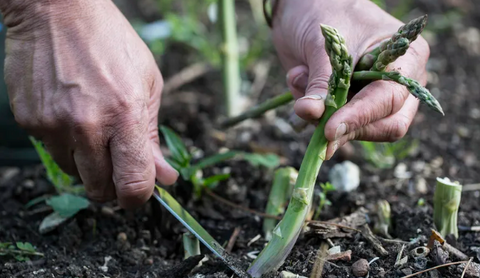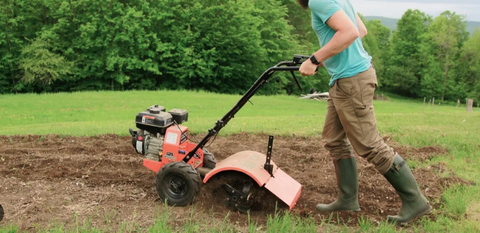Growing bean plants isn't just a hobby; it's a journey of nurturing and reaping the rewards of nature's bounty. In this comprehensive guide, we'll delve into the essential steps and considerations for successfully cultivating and caring for your bean plants, from selecting the right variety to harvesting the fruits of your labor.
- Selecting the Right Bean Variety
- Preparing the Soil
- Planting Bean Seeds
- Providing Optimal Growing Conditions
- Supporting Vertical Growth (for Pole Varieties)
- Fertilizing and Nutrient Management
- Pest and Disease Management
- Pruning and Maintenance
- Recognizing Signs of Maturity
- Harvesting Bean Pods
- Conclusion
Selecting the Right Bean Variety
Consider Climate and Location
Before diving into bean cultivation, it's crucial to consider your local climate and environmental conditions. Different bean varieties thrive in specific climates, so choose one that aligns with your region's temperature and soil characteristics.
Choosing Between Bush and Pole Varieties
Bean plants come in two main types: bush and pole varieties. Bush beans are compact and don't require support, making them ideal for smaller spaces or container gardening. On the other hand, pole beans require vertical support structures and are well-suited for larger gardens with ample vertical space.

Factors to Consider in Bean Variety Selection
When selecting a bean variety, consider factors such as flavor, yield potential, and disease resistance. Some varieties may be better suited for fresh consumption, while others are more suitable for drying and storage purposes. Research different varieties and choose ones that meet your preferences and gardening goals.
Preparing the Soil
Testing Soil pH and Nutrient Levels
Before planting, test your soil's pH and nutrient levels to ensure optimal growing conditions for your bean plants. Beans prefer slightly acidic soil with a pH range of 6.0 to 7.0. Adjust soil pH if necessary and address any nutrient deficiencies by adding organic amendments or fertilizers.
Soil Amendments and Enrichment
Enrich your soil with organic matter such as compost, aged manure, or organic fertilizers to improve soil structure and fertility. Incorporate amendments thoroughly into the soil to provide a nutrient-rich environment for seedling establishment and root development.
Importance of Proper Drainage
Proper drainage is essential for bean plants to thrive and prevent waterlogged soil, which can lead to root rot and other issues. Ensure adequate drainage by amending heavy clay soils with organic matter and avoiding areas prone to water stagnation.
Planting Bean Seeds
Timing and Seasonality
Timing is crucial when planting bean seeds, as they require warm soil temperatures for germination and growth. Wait until after the last frost date in your area to sow bean seeds directly into the garden soil or containers.
Spacing and Depth Guidelines
Follow spacing guidelines to ensure proper air circulation and prevent overcrowding, which can lead to disease susceptibility and reduced yields. Plant seeds at the recommended depth, typically around 1 to 1.5 inches deep, and space them according to the specific requirements of the chosen bean variety.
Germination and Early Growth
Provide consistent moisture and warmth to encourage bean seed germination and early growth. Keep the soil evenly moist but not waterlogged, and protect seedlings from extreme temperature fluctuations and pests until they become established.

Providing Optimal Growing Conditions
Sunlight Requirements
Bean plants thrive in full sun, requiring at least 6 to 8 hours of direct sunlight per day for optimal growth and productivity. Choose a sunny location for planting your bean garden and avoid shaded areas that may hinder plant development.
Watering Techniques
Water bean plants deeply and evenly, ensuring that the soil remains consistently moist but not waterlogged. Use a drip irrigation system or water at the base of the plants to avoid wetting the foliage, which can increase the risk of fungal diseases.
Mulching and Weed Control
Apply a layer of organic mulch around bean plants to conserve soil moisture, suppress weed growth, and regulate soil temperature. Mulching also helps prevent soil erosion and improves overall soil health, creating a conducive environment for healthy bean plant growth.
Supporting Vertical Growth (for Pole Varieties)
Installing Support Structures
For pole bean varieties, provide sturdy support structures such as trellises, stakes, or bamboo poles to facilitate vertical growth and prevent sprawling. Install supports before planting seeds or seedlings to avoid damaging plant roots later on.
Training Bean Vines
Encourage bean vines to climb and twine around support structures by gently guiding them as they grow. Train vines to climb upwards using twine or soft ties, ensuring they have sufficient support to reach their full potential height.
Ensuring Stability and Safety
Regularly inspect support structures for stability and safety, especially during periods of strong winds or heavy rain. Secure supports firmly in the ground or to nearby structures to prevent them from toppling over and damaging growing bean plants.
Fertilizing and Nutrient Management
Understanding Bean Plant Nutrient Needs
Beans have specific nutrient requirements for optimal growth and development, including nitrogen, phosphorus, and potassium. Monitor soil nutrient levels and supplement as needed with organic fertilizers or amendments to provide essential nutrients throughout the growing season.
Types of Fertilizers and Application Methods
Choose organic fertilizers such as compost, aged manure, or fish emulsion to provide slow-release nutrients to bean plants. Apply fertilizers according to recommended rates and timing, avoiding excess nitrogen that can promote lush foliage growth at the expense of pod production.
Organic Alternatives and Sustainable Practices
Explore organic alternatives and sustainable practices for fertilizing bean plants, such as companion planting, cover cropping, and crop rotation. These methods promote soil fertility, biodiversity, and ecosystem health while reducing reliance on synthetic inputs.
Pest and Disease Management
Common Bean Pests and Diseases
Bean plants are susceptible to various pests and diseases, including aphids, bean beetles, powdery mildew, and bacterial blight. Learn to identify common pests and diseases early to implement effective management strategies and minimize damage to your bean crop.
Prevention Strategies
Implement preventive measures to reduce the risk of pest and disease infestations in your bean garden, such as practicing crop rotation, maintaining garden hygiene, and selecting disease-resistant bean varieties. Encourage natural predators and beneficial insects to help control pest populations organically.
Natural and Chemical Control Measures
Consider both natural and chemical control measures for managing severe pest and disease outbreaks in your bean garden. Use insecticidal soaps, neem oil, or botanical pesticides as a last resort, taking care to follow label instructions and minimize harm to beneficial organisms.
Pruning and Maintenance
Trimming Excess Foliage
Prune bean plants selectively remove excessive foliage and promote airflow within the canopy, reducing the risk of fungal diseases and improving sunlight penetration to lower plant parts.

Removing Diseased or Damaged Parts
Regularly inspect bean plants for signs of disease or damage, such as yellowing leaves, wilting, or pest infestations. Promptly remove affected plant parts to prevent the spread of pathogens and maintain overall plant health.
Promoting Air Circulation and Growth Balance
Encourage air circulation around bean plants by spacing them adequately and removing competing vegetation nearby. Promote growth balance by pruning overcrowded or leggy plants, ensuring each plant receives sufficient light and nutrients for optimal development.
Recognizing Signs of Maturity
Flowering and Fruit Set
Monitor bean plants for the onset of flowering and subsequent fruit sets, indicating the transition from vegetative growth to reproductive growth stages. Healthy plants will produce abundant flowers and set numerous pods under favorable growing conditions.
Monitoring Growth Progress
Regularly observe the growth progress of your bean plants, noting changes in foliage color, size, and vigor. Keep track of environmental factors such as temperature, rainfall, and sunlight exposure that may influence plant growth and development.
Assessing Harvest Readiness
Determine the optimal time to harvest bean pods based on maturity indicators such as pod size, color, and texture. Harvest pods when they are firm, crisp, and fully developed, but before they become overly mature and tough.
Harvesting Bean Pods
Timing and Techniques
Harvest bean pods regularly to encourage continuous production throughout the growing season. Use sharp scissors or pruners to snip pods from the plant stem, taking care not to damage neighboring foliage or developing flowers.
Harvesting for Fresh Consumption vs. Drying
Decide whether to harvest bean pods for fresh consumption or allow them to mature and dry on the vine for later use as dried beans. Harvest fresh beans when pods are young and tender, and allow mature pods to dry fully on the vine before harvesting for storage.
Handling and Storing Freshly Picked Beans
Handle freshly picked bean pods with care to avoid bruising or crushing, which can reduce their quality and shelf life. Store harvested beans in a cool, dry place away from direct sunlight, and consume them within a few days for the best flavor and texture.
Conclusion
Growing and caring for bean plants is a rewarding experience that connects us to the natural world and provides a bountiful harvest of nutritious legumes. By following the guidelines outlined in this article, you can cultivate healthy bean plants from seed to harvest and enjoy the satisfaction of growing your own food. Embrace the journey of gardening and savor the flavors of freshly picked beans straight from your garden. Happy gardening!









